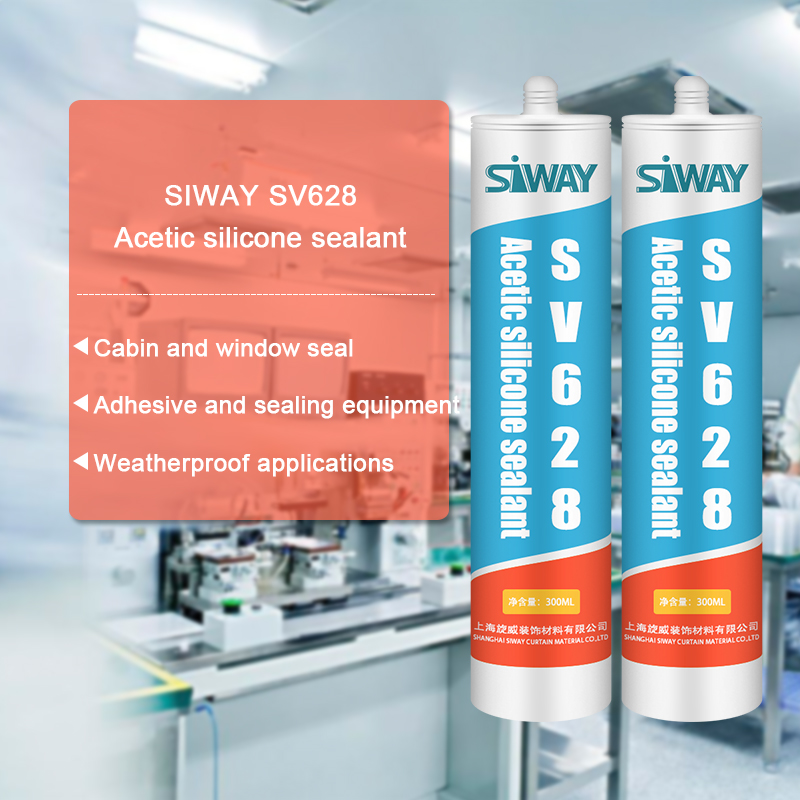Good Quality SV-888 Weatherproof Silicone Sealant to Cairo Manufacturers
Short Description:
Description SV-888 silicone weatherproof sealant is one component, neutral cure silicone sealant, designed for glass curtain wall, aluminum curtain wall and building exterior design, has excellent weathering properties, it can form durable and most building materials, waterproof and flexible interface. Key Features 1. 100% silicone 2. Medium modulus (25% movement capability) 3. UV resistance & weatherproof 4. Primerless adhesion to most building materials Basic Application 1.All ...
It is a good way to improve our products and service. Our mission is to develop creative products to customers with a good experience for Good Quality SV-888 Weatherproof Silicone Sealant to Cairo Manufacturers, We welcome customers, business associations and friends from all parts of the world to contact us and seek cooperation for mutual benefits.
Description
SV-888 silicone weatherproof sealant is one component, neutral cure silicone sealant, designed for glass curtain wall, aluminum curtain wall and building exterior design, has excellent weathering properties, it can form durable and most building materials, waterproof and flexible interface.
Key Features
1. 100% silicone
2. Medium modulus (25% movement capability)
3. UV resistance & weatherproof
4. Primerless adhesion to most building materials
Basic Application
1.All kinds of glass curtain wall weatherproof seal
2.For metal (aluminum) curtain wall, enamel curtain wall weatherproof seal
3.Joint sealing of concrete and metal
4.Roof joint seal
Technical data sheet
| Test standard | Test project | Unit | value |
| Before curing——25℃,50%R.H. | |||
| GB13477 | Flow, sagging or vertical flow | mm | 0 |
| GB13477 | Operating time | min | 10 |
| GB13477 | surface drying time(25℃,50%R.H.) | min | 20 |
| Deep curing | mm/day | 1-2 | |
| Sealant curing speed and operating time will have different with different temperatures and temperature, high temperature and high humidity can make sealant curing speed faster, rather low temperature and low humidity are slower.21 days after curing——25℃,50%R.H. | |||
| GB13477 | Durometer Hardness | Shore A | 28 |
| GB13477 | The ultimate tensile strength | Mpa | 0.65 |
| Temperature stability | ℃ | -50~+150 | |
| GB13477 | Movement capability | % | 25 |
Certification
GB/T 22083-G-35;ASTM C920
Color
Black, white, grey
Package
300ml in cartridge * 24 per box, 590ml in sausage *20 per box
Shelf life
12 months
Note
If you want the TDS or MSDS or other details, please contact with our sales person.
John Merriam Single Speed Cat 1 Freak & 2nd in U.S. Cup Shows You How to install Slime Pro Tubeless Sealant. Created with Pros this advanced bicycle tubeless formula outperforms the competition. Rust and corrosion protection. Ride like a Pro. Ride with Slime Pro Tubeless Sealant. Recommended Quantity per Tire: • Downhill – 3oz (90mL) • Cross Country – 2oz (60mL) • Road 1.5oz (45mL)
If you cannot drain your aquarium to repair a leak from the inside, and you need to work from the outside, you have to beat hydraulic pressure.
The way you can do it, is by patching from bottom (where your leak is) to top.
1) Use a 2″ tape (scotch / masking / duct / whatever). See the patch in my other video: https://www.youtube.com/watch?v=3HRAjfYTesQ
2) patch this tape with a coat or 2 of a plastic bag.
3) put a stripe of silicone (any kind – since it’s external). Now your “bandaid” is ready.
4) put this patch on your Leakage in a way that the dripping is chased up. You cannot completely seal since hydraulic pressure is stronger than silicone. But the silicone is strong enough to push the water flow 1″-2″ up. Just make sure you chase the leak Upwards – not downwards, and not side ways.
5) every 20 minutes or so, you can take of your patch (the plastic bag helps here), and put a new patch, 2″ higher up (repeat steps 1-4) with a small overlap between the previous and the new silicone, so that you continue chasing upwards. If you miss (leak goes in another direction, repeat on this section, till you get it up).
6) as you go upwards, at some point the hydraulic pressure will be low enough that your leakage stops completely. even if you are not lucky, once you reach the top water level, the water pressure is 0, and your leakage will be over.
My leak was at the bottom front left side, and I had to work up slowly against 15″ of water (about 40cm on a 50cm deep aquarium).
When I started this, I did’t know how it was going to turn out. In hindsight I would of course drain 1/3 of the water or 1/5 of the water – anything that is doable without taking out the fish (my initial constraint) or impacting the bio-equilibrium. Doing this would reduce pressure and essentially make it easier (it would take less stages of 2″ patching).
As a conclusion, I can say that in any case drain your aquarium as much as you can – it will help.
Then, if your leak is situated above the water level – work from the inside, using aquarium safe silicone, and if your leak is below that, use the method in this video.
As this was my first external repair it doesn’t look nice, and possibly I could have tried with less silicone, or maybe I could have trimmed it afterwards. However right now I cannot afford the headace of causing a new leak just for the sake of aesthetics.




